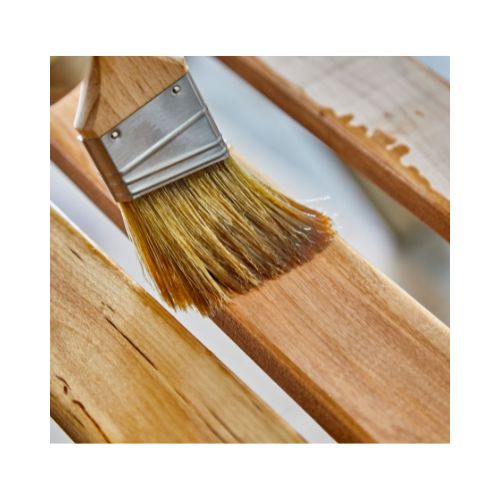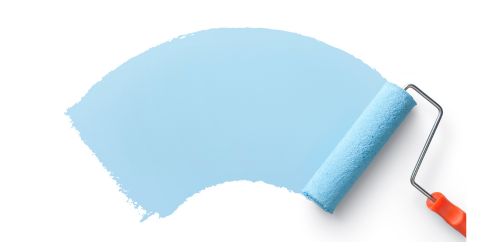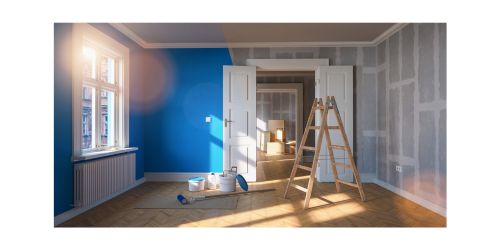Understanding the importance of choosing the right wood stain color
When it comes to woodworking, choosing the right wood stain color makes all the difference in the final results of your project. The color of the stain not only enhances the natural beauty of the wood but also helps to set the tone and style of the overall project. Whether you're refinishing a piece of furniture or working on a DIY project, selecting the perfect wood stain color is essential for achieving the desired look and feel.
Before diving into the process of choosing a wood stain color, it's important to understand the impact it will have on your project. The color you choose will determine whether your piece looks rustic, modern, or traditional. It can also affect the perceived size and brightness of the space in which the finished piece will be placed. By selecting the right wood stain color, you can create a cohesive and visually pleasing environment that complements your personal style and existing decor.
Factors to consider when choosing a wood stain color
There are several factors to consider when choosing the right wood stain color for your project. One of the most important factors is the type of wood you are working with. Different species of wood absorb stain differently, which can affect the final color. For example, oak tends to take stain more evenly and deeply, while pine may require additional steps to achieve the desired color. It's important to research how your chosen wood species interacts with different stains to ensure the best results.
Another factor to consider is the style and theme of your project. Are you looking for a rustic farmhouse look or a more modern design? Different wood stain colors can help you achieve your desired results. For a rustic look, consider opting for warm, earthy tones such as chestnut or walnut. If you prefer a more contemporary feel, lighter stains like ash or birch may be more suitable. Take into account the overall color scheme of the room or space where the finished piece will be placed to ensure it complements the existing decor.
Additionally, it's crucial to consider the level of transparency or opacity you desire for your wood stain. Transparent stains allow the natural grain of the wood to show through, while opaque stains offer more coverage and can be used to completely change the color of the wood. Understanding the level of transparency that you are looking for will help narrow down your options and ensure you achieve the desired outcome for your project.
How to determine the desired finish for your wood project
Determining the desired finish for your wood project is an important step in choosing the perfect wood stain color. The finish refers to the appearance and texture of the wood's surface once the stain is applied. There are various finishes to choose from, each offering a different level of sheen and protection.
One popular finish is a matte or satin finish, which provides a subtle sheen and a smooth, non-reflective surface. This finish is ideal for projects that require a more natural look, as it maintains the wood's original appearance while enhancing its color. If you prefer a glossy and reflective finish, you can opt for a semi-gloss or high-gloss finish. These finishes add depth and richness to the wood but may require additional maintenance to keep them looking their best.
Consider the purpose and location of your project when deciding on the desired finish. For example, if you're staining a dining table that will be used frequently, a more durable finish like a high-gloss may be appropriate. On the other hand, if you're staining a decorative piece that won't be handled as often, a matte or satin finish may be more suitable. Determining the desired finish will help guide your choice of wood stain color and ensure the final result meets your expectations.
Exploring different types of wood stains and their color options
When it comes to wood stains, there are various types and color options available. Understanding the differences between them can help you make an informed decision and choose the right wood stain color for your project.
One common type of wood stain is oil-based stain. Oil-based stains penetrate deep into the wood, enhancing its natural beauty and providing long-lasting protection. These stains come in a wide range of colors, from light oak to rich mahogany. They are suitable for both interior and exterior projects and can be used on a variety of wood species.
Another type of wood stain is water-based stain. Water-based stains are easy to use, have low odor, and dry quickly. They offer a wide range of colors and can be used on both interior and exterior wood projects. Water-based stains are also environmentally friendly, making them a popular choice among environmentally conscious woodworkers.
Gel stains are another option to consider. Gel stains have a thicker consistency compared to traditional stains, making them easier to apply on vertical surfaces and achieving a more even color. They are ideal for achieving a rich, deep color and can be used on both interior and exterior wood projects.
How to test wood stain colors on your project
Before committing to a specific wood stain color, it's essential to test it on your project to ensure it achieves the desired look. Testing wood stain colors will help you see how the stain interacts with the wood species you're working with and how it complements the overall aesthetic of your project.
To test wood stain colors, start by preparing a small section of the wood you'll be staining. Sand the area to be tested to remove any existing finish or sealant. Apply a small amount of each stain color you're considering to the prepared area and allow it to dry according to the manufacturer's instructions. Once dry, evaluate the color in different lighting conditions to see how it looks throughout the day.
Keep in mind that the color of the wood stain can vary depending on the number of coats applied and the length of time it's left on the wood. Consider applying multiple coats to achieve a deeper color or diluting the stain with a compatible solvent for a lighter shade. By testing the wood stain colors on your project, you can make an informed decision and select the perfect color that enhances the natural beauty of the wood.
The impact of lighting on wood stain colors
Lighting plays a crucial role in how wood stain colors appear. Natural and artificial lighting can significantly affect the perception of color, making it essential to consider the lighting conditions in the space where your finished piece will be placed.
Natural light, such as sunlight, can bring out the warm tones in wood stain colors and make them appear brighter. If your project will be exposed to a lot of natural light, consider choosing a slightly darker stain color to ensure it doesn't appear washed out.
On the other hand, artificial lighting, such as incandescent or fluorescent lights, can cast a different hue on the wood stain color. It's important to test the stain colors under the lighting conditions that will be present in your space. This will help you see how the colors will look throughout the day and ensure they complement the lighting in the room.
Additionally, consider the direction and intensity of the light source. Shadows and reflections can alter the appearance of the wood stain color, so it's important to take this into account when making your final decision. By understanding the impact of lighting on wood stain colors, you can choose a color that looks its best in your specific lighting conditions.
How to match wood stain colors to existing furniture or decor
If you're working on a project that will be placed alongside existing furniture or decor, it's important to consider how the wood stain color will coordinate with the rest of the space. Matching wood stain colors to existing furniture or decor can create a cohesive and visually appealing environment.
Start by identifying the dominant colors in the room or space where your project will be placed. Look for any furniture, flooring, or other elements that have a significant impact on the overall color scheme. Once you have identified these colors, choose a wood stain color that complements or contrasts with them.
For example, if you have a room with predominantly warm colors, such as reds and oranges, consider choosing a wood stain color with warm undertones, like cherry or mahogany. This will help create a cohesive look and tie your project in with the existing decor. If you prefer a more contrasting look, opt for a wood stain color with cool undertones, such as ash or gray, to create visual interest and make your project stand out.
When matching wood stain colors to existing furniture or decor, it's important to consider the undertones of the colors as well. Undertones can be warm (yellow, red, orange) or cool (blue, green, gray). By choosing a wood stain color with similar undertones, you can ensure a harmonious and well-coordinated look.
Popular wood stain color options and their characteristics
There are several popular wood stain color options available, each with its own characteristics and appeal. Here are some of the most popular wood stain colors and what they bring to your woodworking projects:
-
Natural: This is the most transparent option, allowing the natural beauty and color of the wood to shine through. Natural stain provides a protective finish while maintaining the wood's original appearance.
-
Golden Oak: As the name suggests, golden oak stain brings a warm, golden hue to the wood. It enhances the natural grain and is particularly suited for oak and pine.
-
Chestnut: Chestnut stain offers a rich, reddish-brown color that adds warmth and depth to the wood. It works well with both light and dark wood species, making it a versatile choice.
-
Mahogany: Mahogany stain provides a deep, luxurious red-brown color. It is often used to mimic the look of expensive mahogany wood and adds an elegant touch to any project.
-
Ebony: Ebony stain offers a dramatic, dark black color. It is commonly used for a modern or contemporary aesthetic and provides a striking contrast against lighter wood species.
-
Weathered Gray: Weathered gray stain gives the wood a weathered, aged appearance. It is perfect for achieving a rustic or coastal look and adds character to any project.
These are just a few examples of popular wood stain colors, and there are many more options available. Consider the characteristics of each color and how they align with your desired aesthetic to choose the perfect wood stain color for your project.
Resources for inspiration and guidance in choosing wood stain colors
If you're feeling overwhelmed or unsure about choosing the right wood stain color for your project, there are several resources available to provide inspiration and guidance. These resources can help you explore different color options, see how they look in real-life projects, and gather ideas for your own woodworking endeavors.
One valuable resource is woodworking magazines. These magazines often feature articles showcasing different wood stain colors and their applications. They may also provide tips and techniques for achieving specific finishes or styles. Subscribing to a woodworking magazine or browsing through back issues can provide a wealth of information and inspiration.
Online forums and communities dedicated to woodworking are another excellent resource. These communities allow you to connect with fellow woodworkers, share ideas, and ask questions. You can post pictures of your project, seek advice on choosing the right wood stain color, and receive feedback from experienced woodworkers. This interaction can be invaluable in helping you make an informed decision and choose a wood stain color that meets your needs.
Lastly, professional woodworkers and woodworking experts can offer valuable guidance and advice. If you know someone who is experienced in woodworking, consider reaching out to them for recommendations or assistance. They may have firsthand knowledge of different wood stain colors and can provide insights based on their own projects and experiences.
By utilizing these resources, you can gather inspiration and guidance to choose the perfect wood stain color for your project.
Conclusion
Choosing the right wood stain color is a crucial step in any woodworking project. It sets the tone and style, enhances the natural beauty of the wood, and complements the existing decor. By understanding the factors to consider, exploring different types of wood stains, testing colors on your project, and considering the impact of lighting and existing furniture, you can confidently choose the perfect wood stain color.
Remember to consider the type of wood you're working with, the desired finish, and the overall style of your project. Take advantage of resources such as woodworking magazines, online forums, and professional woodworkers for inspiration and guidance. By following these steps, you can achieve a stunning result that showcases your woodworking skills and leaves you with a project you can be proud of.
So, take your time, explore the possibilities, and enjoy the process of choosing the perfect wood stain color for your project.



